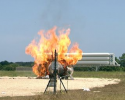Today I was messing around with my deadlift stance during warm-up. I put my feet a bit narrower than usual. This made things feel a bit more difficult than my usual stance. I considered using this new stance for my work sets since I am at the beginning of a mesocycle, but I resolved to put my feet back to their usual position during the work sets.
Varying An Exercise
Varying an exercise can be as simple as changing the Squat Width Stance Width, going from a High Bar Squat ot Low Bar Squat, going from a Wide Grip Bench Press to a Medium or Narrow Grip, going from a Narrow Stance Deadlift to a Medium or Wide Stance.
Doing so work the muscle in the movement from a different angle. This is an effective method for increasing strength as well increasing muscle mass.
...sometimes a technique might feel harder at first but then perhaps when you invest in it, it might take you further than your old technique.
Changing Exercises
Research shows that modifying an exercise, as noted above, works it from a different angle. This increases strength and size; dependent on how your program is written and performed.
CHANGES IN EXERCISES ARE MORE EFFECTIVE THAN IN LOADING SCHEMES TO IMPROVE MUSCLE STRENGTH
This study investigated the effects of varying strength exercises and loading scheme on muscle cross-sectional area (CSA) and maximum strength after 4 strength training loading schemes: constant intensity and constant exercise (CICE), constant intensity and varied exercise (CIVE), varied...

pubmed.ncbi.nlm.nih.gov
ABSTRACT
Our findings suggest: (a) CIVE (Constant Intensity-Varied Exercise) is more efficient to produce strength gains for physically active individuals; (b) as long as the training intensity reaches an alleged threshold, muscle hypertrophy is similar regardless of the training intensity and exercise variation.
Maximum Dynamic Strength (1 Repetition Maximum)
The training protocol that varied the exercises but not the intensity
(CIVE) was the most efficient in increasing maximum strength among all of the training groups.
DISCUSSION
The training regimen in which the intensity was constant and the exercises were varied (i.e., CIVE) demonstrated greater strength gains when compared with those groups that did not vary the exercise selection (i.e., VICE and CICE), and the one that varied both exercises and training intensities (i.e., VIVE), over the 12-week training period.
In summary, our data suggest that constant intensity training with varied exercises (CIVE) is more efficient to produce strength gains for physically active individuals.
Technique Development
Varying how an exercise is perfomed increases stregth, which will carry over to strength in your previous Exercise Technique.
However, it will not improve you previous Exercise Technique; which has been covered other post on StrongFirst.
Technique Development for a 1 Retition Max is optmaily developed by...
1) 80% Loads of 1 Repetition Max Training
2) 1-2 Repetitions Per Set
Perfoming Low Repetitions in Technique Training means the focus is on the Movement when you are fresh; which Technique is optimized.
3) Rest Periods between 1-2 Repetition Sets needs be long enough to ensure you are fresh and you Technique is optimal.
4) Technique Training needs to be performed at the beginning of a Workout or on a Separate Day.
5) Muiscle Fatigue
Once Muscle Fatigue occurs on a Technique Training Day, Stop!
Continuing once Muscle Fatigue sets in develops and reinforces Poor Technique.
When Technique is altered it become a completely different exercise.
how do you (or can you even) know when it is worth switching techniques,
Periodization Training
Periodization Training is a Planned Training Cycles consisting or a certain number or weeks.
Each week the Load is increases. In the final week, the exercise is pushed to the limit or close to it.
Then begin a...
New Periodization Training Cycle
The New Periodization Training Cycle starts off with something light and easy. The Load is increased each week until the final week, where it is pushed to the limit or close to it.
The New Periodization Training Cycle is a good place to "Switch Techniques". This means that you are Changing the Exercise, working the Muscles from a Different Angle; which increases strength and size.
Summary
1) Periodization Training Cycles
This is the underlying mechanism that athletes in all sports used to make improvement in their sports performance.
Periodization Training work for everyone!
It is is a Cyclical Cyclethat progressively increase the stress/trauma on the muscles.
Once the final week of a Periodization Training Cycle is completed, it is followed by a New Periodization Training Cycle that starts of easy. Doing so, produces...
Active Recovery
Recovery is where strength and size gain are made.
Active Recovery in the New Training Cycle increases blood flow to the muscles, which promotes faster recovery.
2) Varying Exercises
Making slight changes in how you perform an exercise, allows you to work it from a different angle; which increases strength and size.
3) Technique Training is only developed when it is part of a Training Plan.
Technique Training needs to be trained at the beginning of a Workout or on a Separate Day.
The information above provides the Technique Training Protocol that needs to be implemented.


